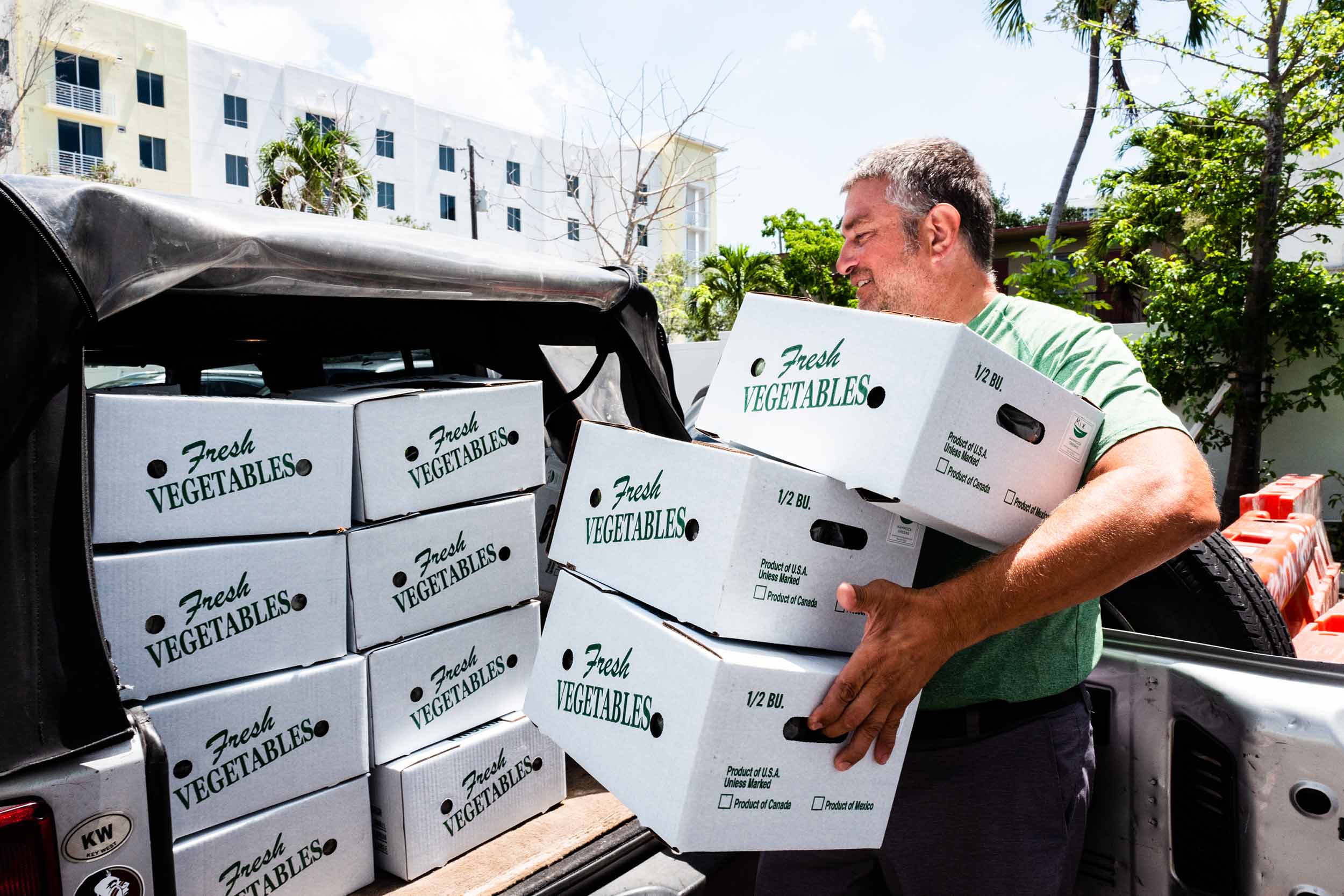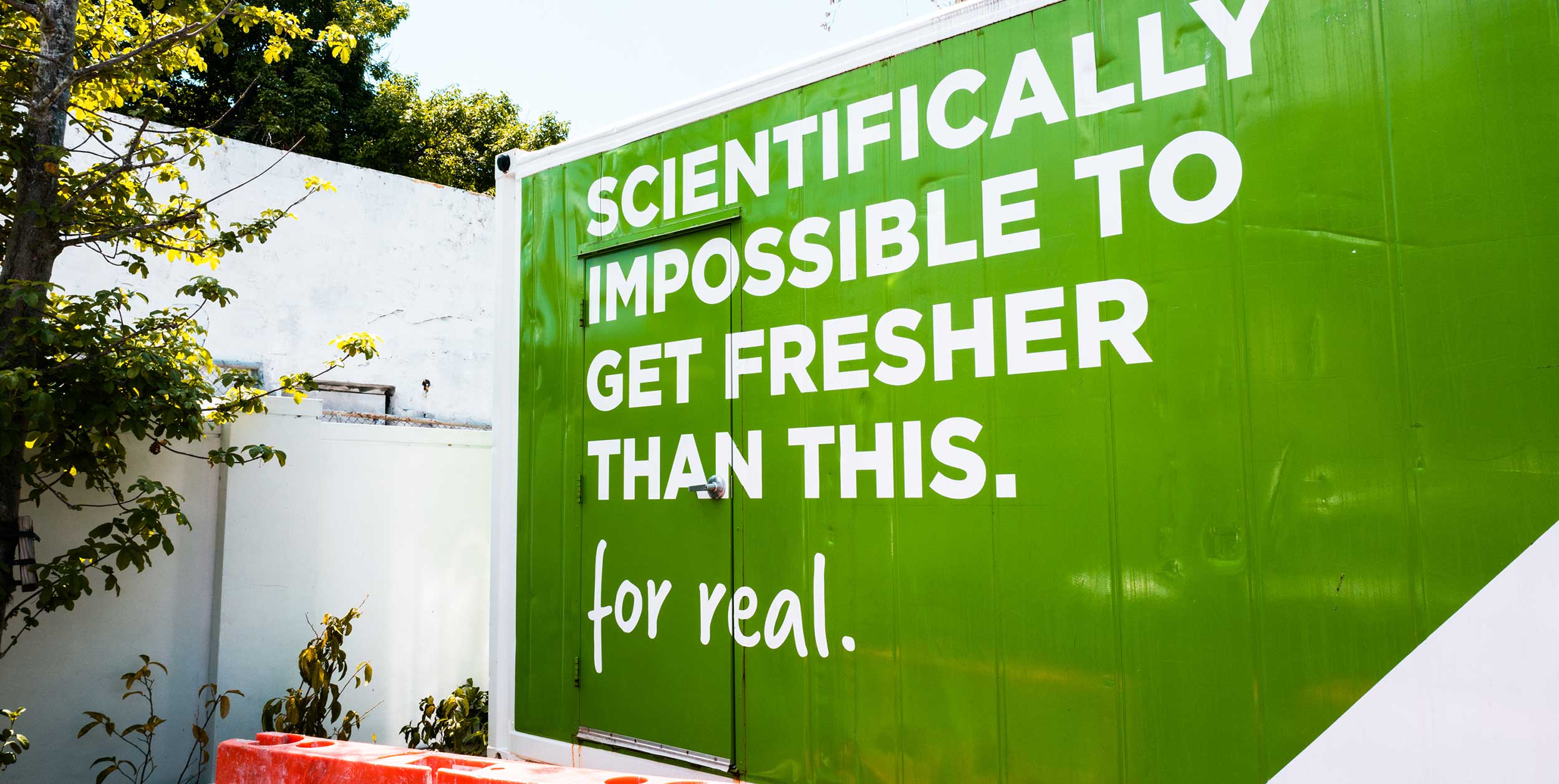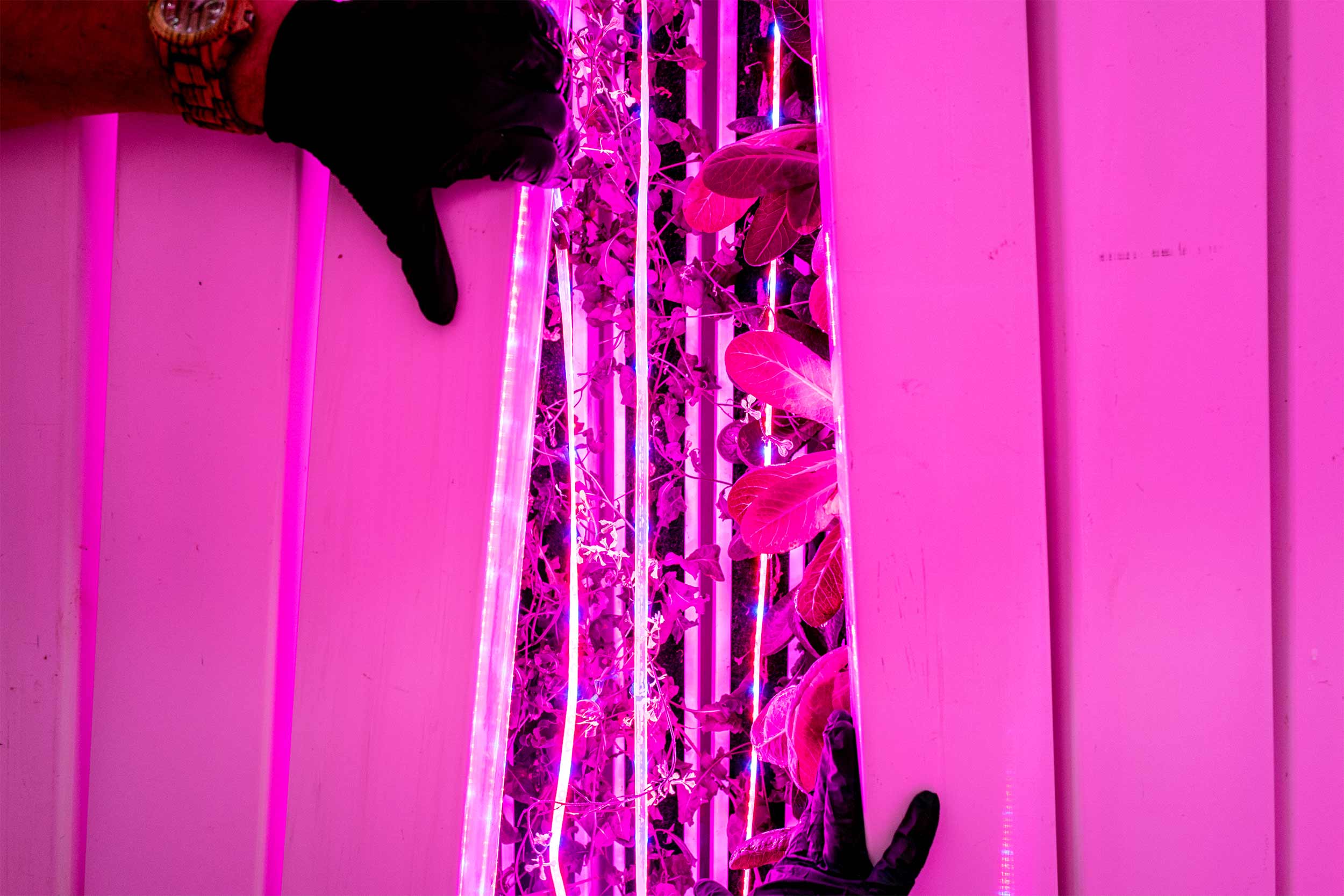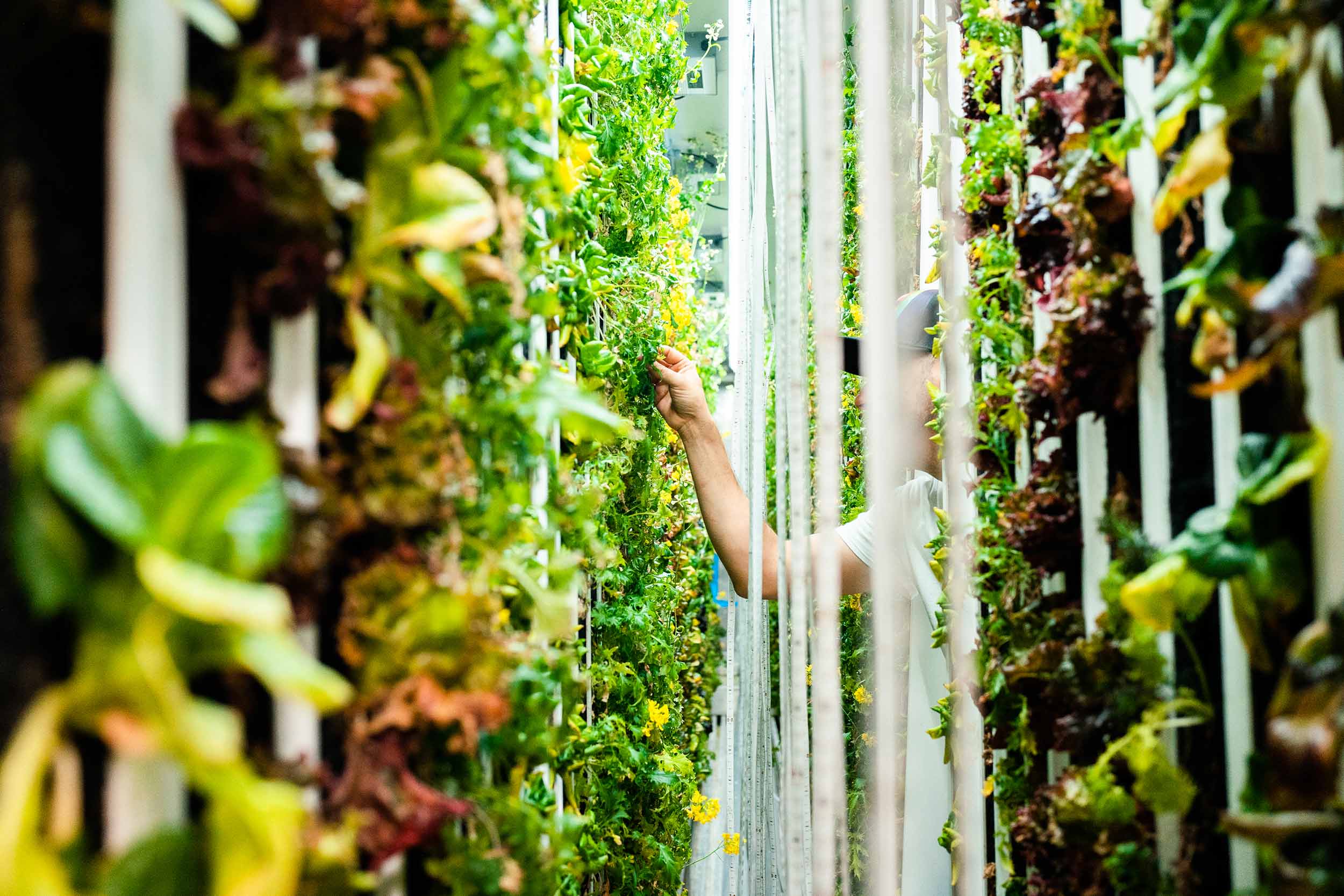Freight Farms has 16 Questions with Aaron & Thomas of Hammock Greens. "We’ve become known for a few things. I think my personal favorite is Sorrel, specifically red-veined sorrel which has the most vibrant red color. Chefs go nuts for it!"
 Hammock Greens Has 6 Farms, and They're Not Done!
Hammock Greens Has 6 Farms, and They're Not Done!

Contributed by | Freight Farms
What is the story behind Hammock Greens?
Aaron Dreilinger: We’re a South Florida-based startup supplying wholesale produce direct-to-restaurants and (soon) direct-to-consumer. Our vision was to create a source of clean, local, fair food while also activating all types of unused spaces around the Miami area. Since starting in 2017, we’ve focused on exponential growth: We have six containers now and we hope to add five more by 2020.
Thomas–you discovered Freight Farms. How did you find out about us?
Thomas Smitherman: I had sold my previous company to take a break. My family and I researched some new careers, making calls to companies that interested us, Freight Farms among them. Freight Farms took the call and gave us better customer service overall from them. So they got the business.
Did either of you have previous farming experience?
AD: We had a unique combination of culinary and agricultural backgrounds, with a little science in the mix. Originally, I studied Sustainable Design, but ultimately became a chef. In my career, I’ve spent years developing relationships as a consumer and supporter of local farms, which are scarce in Miami. I began the search for a stronger agricultural connection and met Thomas, who has a traditional agriculture family background and worked with premium wine brands at every level. However, actual farming was not in either of our backgrounds. We had to learn a lot about the industry, the market, and how it worked and it is Thomas that ultimately became the master farmer and scientist of the team.
How did you arrive on the name, ‘Hammock Greens’
TS: Freight Farms told us a lot about how easy is was to grow leafy greens indoors using a shipping container with remote monitoring. I told myself “This sounds like it’s something I could do from my hammock”, and Hammock Greens was born.

CROPS & PACKAGING
FF: Which is your favorite crop to grow and why?
AD: We’ve become known for a few things. I think my personal favorite is Sorrel, specifically red-veined sorrel which has the most vibrant red color. Chefs go nuts for it! Of course, the more delicate stuff, like upland cress and lemon balm are strong seconds. Overall, we focus on a balance blend. Since we have multiple mixed cases, we are serious about variety. And we listen to our customers. We help them plan menus and discuss trends.

FF: How do you package your crops?
AD: Here’s a headache–there’s a real market for better packaging out there. Mostly, live greens packaging is catered to musclebound-roid-raged California heads like Bibb. Boring. Tasteless. As a result, we’ve become quite creative with the packaging, making due with a number of combinations of plastic liners and traditional cardboard.
We just launched a kickstarter campaign is geared at producing a more unique and renewable solution to our growing needs and we’d love to connect with the right partner and develop something better for the entire vertical farming community.
CUSTOMERS
Who are your customers?
AD: While a portion of our business is donated to the homeless, the rest services restaurants. And as a premium brand, we are in demand with some very impressive chefs and restauranteurs.
How did you first build these relationships?
AD: Initially we contacted industry friends and from there word spread. In the beginning you had to “know somebody” to get to us, and the chefs liked that kind of exclusivity. Soon they were putting our name in print and that really helped too.
Do you find that customers are willing to pay more for your premium product?
TS: Yes, and no. Some understand the value of what we have to offer and some don’t. Those who get it, are happy with the price point. Those who don’t are interested in a higher volume product.
Can you share your favorite customer story?
TS: One specific time comes to mind during a Slow Food Miami fundraiser/award ceremony that featured all of Miami’s best chefs. All of them were so proud to speak about our product to their customers. Over half of the 30 Miami chefs being honored were already customers and they were choosing to tell our story that night. It was a very moving evening.
INDUSTRY
What’s the most pressing issue in food and agriculture that you’d like to see solved?
AD: Distance. On a large scale, we’ve become spoiled and demanding by constant availability. Seasonal means just that. Not everything should available all the time. And if it must be (ie leafy greens) then find a way to produce locally when you want it! We did.

TS: That’s a ridiculous question, but if I had to choose one thing, I would say the “food system” needs to find a way to feed the poor. I think removing processed foods is the biggest opportunity there: When people start using fresh products we lower all the other societal costs associated with poor diet.
What is one small change everyone can make in their daily lives to make a big difference in our food system?
AD: Count your ingredients. Count the syllables, and the total amount. 3-4 is a good number! If your kids cant read it, don’t feed it to them. Basically, shop carefully from the “outside isles” of the grocery store.
What reaction do you typically get from people when you tell them what you do for a living?
TS: Amazement and astonishment. Genuine excitement. And then, a lot of ideas that it is strictly philanthropic. I often have to remind people that, while we try and do some charity with the farms, at the end of the day this is a commercial business.
You mentioned earlier your goal to grow in 2020. Any other plans for the future?
AD: We are looking for exponential growth this year and next. This includes some high profile spaces in conjunction with local government. Another large project will see us connected to an international celebrity chef group/restaurant chain.


What was the most challenging part of becoming a Freight Farmer and how were you able to overcome it?
AD: Location. We set out to place a container is a variety of locations. “Hyper-localism” gave way to a disparate range of locations, from art galleries to alleyways. This opened up a number of logistic- and compliance-related challenges. One space in particular had to be changed less than 6 months into operation due to construction. But part of our marketing and branding philosophy pushed us to find high profile, community based locations, where we were welcomed and appreciated. Ultimately this challenge became integral to our brand identity.
TS: Everything but the farming. Packaging, marketing, business plan, raising capital. Once you’re in it, you have to produce consistently. Now that it is built, the challenge is maintaining production at high standards while still developing the business side.
Any finally, what’s the best piece of advice you can give to people interested in becoming Freight Farmers?
AD: Its not easy. Know your market very well. Establish relationships with that market. Listen to their needs, make sure they know your limitations and capabilities, and deliver- often!
TS: Be less concerned about the crops–spend more on packaging and selling, the crops will grow!
The content & opinions in this article are the author’s and do not necessarily represent the views of AgriTechTomorrow
Comments (0)
This post does not have any comments. Be the first to leave a comment below.
Featured Product

